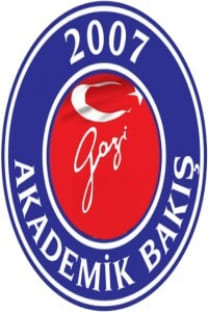Regional Organizations and Conflict Management in Africa: The Case of the African Union and Conflict Management in Kenya
Çatışma Yönetimi ve Diyalog, Arabuluculuk, Müdahalede Bulunmak, Homojen Örgütler, Demokratik Örgütler
Afrika’daki Bölgesel Organizasyonlar ve Kriz Yönetimi: Kenya’da Kriz Yönetimi ve Afrika Birliği Örneği
Conflict Management and Dialog, Mediate, Intervene, Homogenous Organizations, Democratic Organizations.,
___
- Books
- Baehr, Peter, and Gordenker Leon. The United Nations in the 1990s, St. Martin’s Pres, New York 1994.
- Breaher, Michael and Jonathan Wilkenfeld. A Study of Crisis, University of Mic- higan Press, Ann Arbor 1997.
- Canbolat, İbrahim S., Gelişmekte Olan Ülkeler: Küresel Politik ve Ekonomik Çıkar İliş- kilerindeki Konumları, Alfa Aktüel Yayınları, İstanbul 2004.
- Carment, David and Frank Harvey. “Evaluating Third-Party Efforts to End Int- rastate Ethnic Conflict” in Using Force to Prevent Ethnic Violence, An Evaluation of Theory and Evidence, Praeger Publishers, Westport 2001.
- Chester A. Crocker, cited in Weiss, Thomas G., Military-Civilian Interactions. Inter- vening in Humanitarian Crises. Rowman & Littlefield Publishers Inc., Boulder CO 1999.
- Deutsch, Morton. The Resolution of Conflict: Constructive and Destructive Processes, Yale University Press, New Haven CT 1973.
- Hampson, Fen Osler. “Parent, Midwife or Accidental Executioner: The Role of Third Parties in Ending Violent Conflict”. In Chester A. Crocker, Fen Osler Hampson and Pamela Aall, eds., Turbulent Peace: The challenges of managing international conflict, Uni- ted States Institute of Peace Press, Washington D.C. 2001.
- Huntington, Samuel P. , Political Order in Changing Societies, Yale University Press, New Haven 1968.
- Licklider, Roy. “Obstacles to Peace Settlements.” in Chester A. Crocker, Fen Osler Hampson and Pamela Aall, eds., Turbulent Peace: The challenges of managing interna- tional conflict, United States Institute of Peace Press, Washington D.C. 2001.
- Monroy Cabra, Gerardo et. al. Manual de Derecho Internacional Pşblico. Bogotá 1986..
- Raiffa, Howard. The Art and Science of Negotiation, Harvard University Pres, Camb- ridge 1982.
- Rosenau, James N. “Intervention as a Scientific Concept”. in James N. Rosenau, ed., The Scientific Study of Foreign Policy, Nichols Publishing Company, New York 1969.
- Schelling, Thomas C. Strategy of Conflict, Harvard, Cambridge 1960..
- Walton, Richard E., and Robert B. McKersie. A Behavioral Theory of Labor Negotia- tions: An Analysis of a Social Interactive System, ILR Pres, Ithaca NY 1991.
- White, N.D., Keeping the Peace: The United Nations and the Maintenance of International Peace and Security, Manchester University Press 1993.
- Young, Oran R. The Intermediaries: Third Parties in International Crises, Princeton NJ, 1967. Articles
- Bercovitch, Jacob. “International Mediation and Dispute Settlement: Evalua- ting the Conditions for Successful Mediation”. Negotiation Journal 7/1 (1991), pp. 17-30.
- Betts, Richard K. “The Delusion of Impartial Intervention”. Foreign Affairs, 73 (1994) Nov/Dec, pp. 20-33.
- Butler, Michael J. “Just War Theory and U.S. Military Intervention in Crisis”. Journal of Conflict Resolution 47/2 (2003), pp. 226-248.
- Huntington, Samuel P. “Political Development and Political Decay”. World Po- litics, 17 (1965), pp.386-430.
- Regan, Patrick M. “Third-Party Interventions and the Duration of Intrastate Conflicts”. Journal of Conflict Resolution, 46/1 (2002), pp. 55-73. Electronics Sources
- http://edition.cnn.com/2008/WORLD/africa/01/05/kenya.diplomat.ap/index. html(01.05.2008)
- http://news.bbc.co.uk/2/hi/africa/country_profiles/1024563.stm(18.01.2008).
- http://topics.nytimes.com/top/news/international/countriesandterritories/ kenya/index.html?inline=nyt-geo(30.01.2008).
- http://www.csmonitor.com/2008/0103/p01s03-woaf.html (01.03.2008).
- http://www.state.gov/r/pa/ei/bgn/2962.htm(12.07.2007).
- http://www.sudantribune.com/spip.php?article25500(25.01.2008).
- https://www.cia.gov/library/publications/the-world-factbook/geos/ke.html (24.01.2008).
- ISSN: 1307-9778
- Yayın Aralığı: 2
- Başlangıç: 2007
- Yayıncı: Hale Şıvgın
Rusya’nın Türkiye Siyasetinde Ermeni Kartı (1878-1918)
Patrikhane İle İlgili Bir Belge / Bir Uyarı
Seredniy Stoh ve Yamnaya Kültürleri
Birinci Balkan Harbi ve Selanik’in Kaybı
Türkiye’de Asker-Hükümet İlişkisi: Albay Talat Aydemir Örneği
İskit İmparatorluğu'nun yıkılış nedenleri
